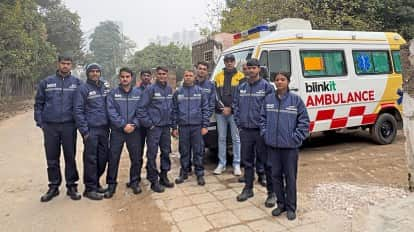Blinkit, a prominent quick-commerce platform in India, has recently launched a 10-minute ambulance service in Gurugram, aiming to provide rapid medical assistance to residents. Each ambulance is staffed with a paramedic, an assistant, and a trained driver, and is equipped with essential life-saving equipment, including oxygen cylinders, Automated External Defibrillators (AEDs), stretchers, monitors, suction machines, and emergency medications. The service is priced at a flat fee of ₹2,000.

Source:- bbc news
This initiative brings attention to a significant issue in India’s healthcare infrastructure: the shortage of Advanced Life Support (ALS) ambulances. As of July 2024, out of 17,495 operational ambulances in the country, only 3,441 are ALS units. This shortage is particularly acute in high-focus areas like the Northeastern states, which have only 26 ALS ambulances in service.
Source:- news 18
The lack of adequate life support units has had dire consequences. For instance, in September 2024, 19-year-old boxer Karan Pipaliya collapsed during a fight at the Gujarat State Boxing Championships and was declared brain dead after suffering a brain hemorrhage. His father criticized the event organizers for providing only one ambulance for approximately 150 participants, leading to delays in receiving critical medical attention.
While Blinkit’s service is a step toward addressing emergency response times, it also underscores the need for systemic improvements in India’s ambulance services. The current recommendation is to have at least one Basic Life Support (BLS) ambulance per 100,000 population and one ALS ambulance per 500,000 population. However, many regions fall short of these standards, highlighting the necessity for increased investment in medical infrastructure and trained personnel.
In conclusion, Blinkit’s 10-minute ambulance service is a commendable initiative that highlights the critical need for more ALS units across India. Addressing this shortage is essential to ensure timely and effective medical care during emergencies, ultimately saving lives.
Share your views in the comments

